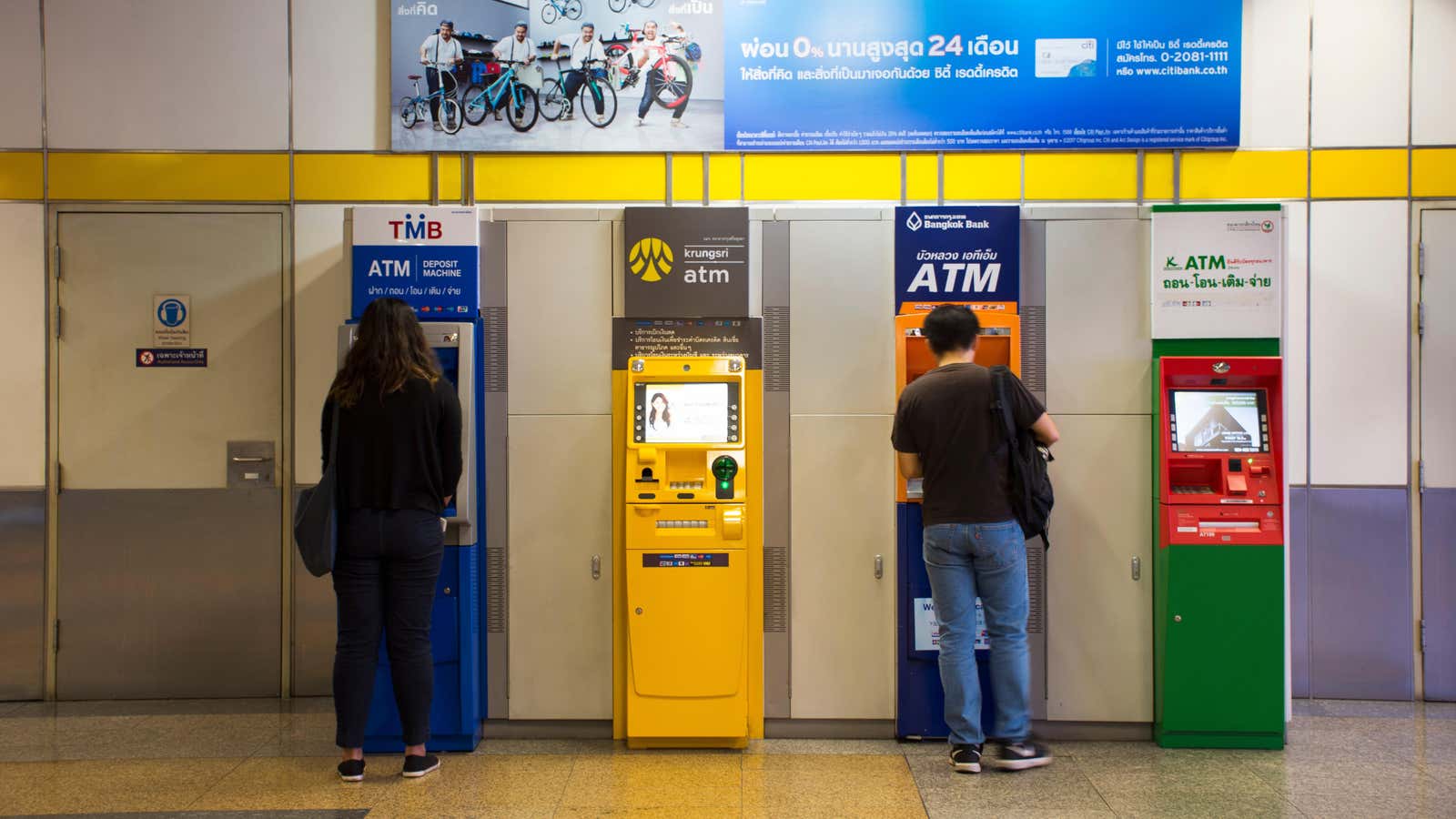Don’t Make This Mistake When Using an ATM Abroad

When traveling abroad , you need to do your research to make sure you’re getting the best exchange rate, but even if you land in a foreign country with a perfect budget, the best plans can go awry. In particular, if you find yourself using a foreign ATM, it is important not to make this costly mistake.
After you enter your debit card, the machine will ask you if you prefer to pay in your home currency (instead of your local currency), prompting you to “accept” or “reject”. Some people choose “accept” because they don’t quite understand what the prompt is asking for. But if you see this prompt, it’s in your best interest to click “decline.” This is because if you accept the ATM’s offer to convert withdrawals to your home currency, they will add an additional exchange rate fee that you must pay on top of any base fee charged by the ATM. This practice is known as “dynamic currency conversion” and is intended to take advantage of naive travelers to maximize ATM profits.
If your modus operandi when you travel abroad is to avoid the hassle of an ATM altogether, you have a few options. First, you can check if your credit card company covers international transaction fees. While not a given, it’s a relatively common benefit: some credit cards from Chase , Bank of America , and Capital One give customers this privilege. Alternatively, you can try to get all the currency you will need for the entire trip from the bank before leaving the country. Bank of America charges no commission to customers on foreign exchanges greater than $1,000 and only charges a flat fee of $7.50 on orders below that amount. TD Bank has a similar $7.50 currency exchange fee, but with a $250 minimum order and a $1,500 maximum order. Both options are much more competitively priced than what it would cost you to withdraw money from a foreign ATM.